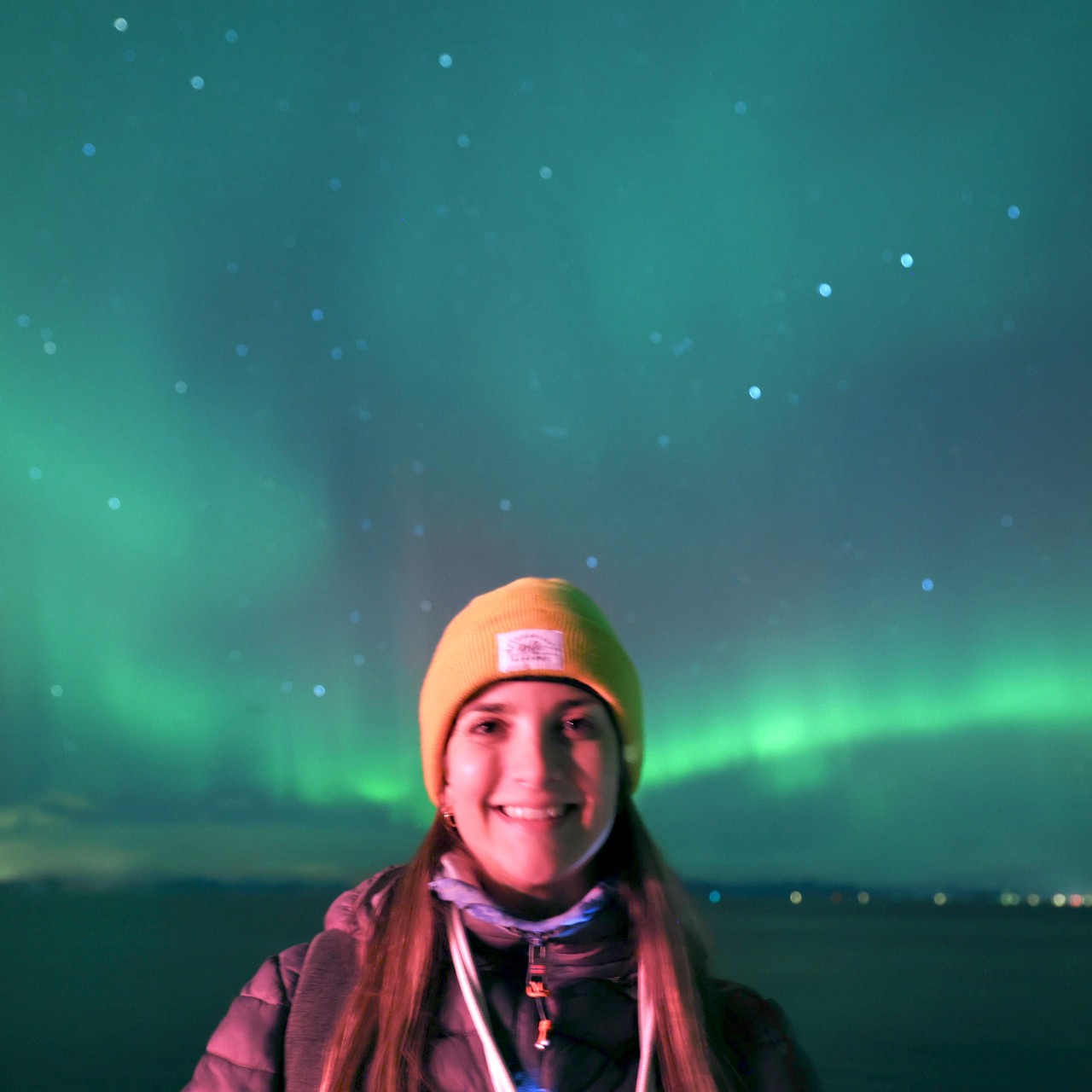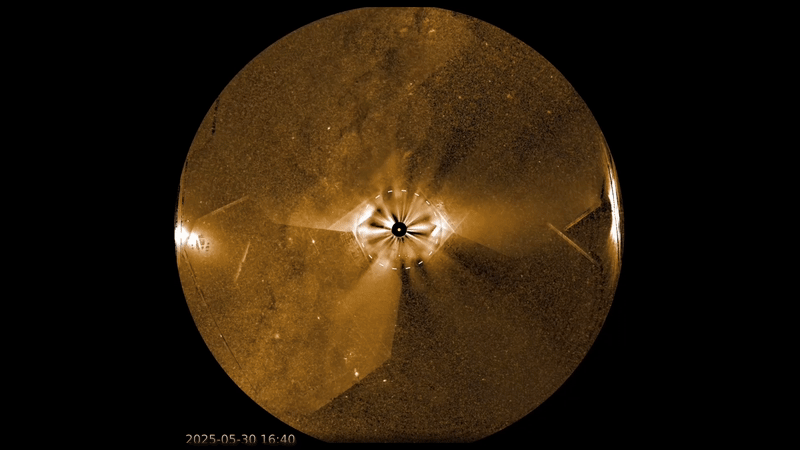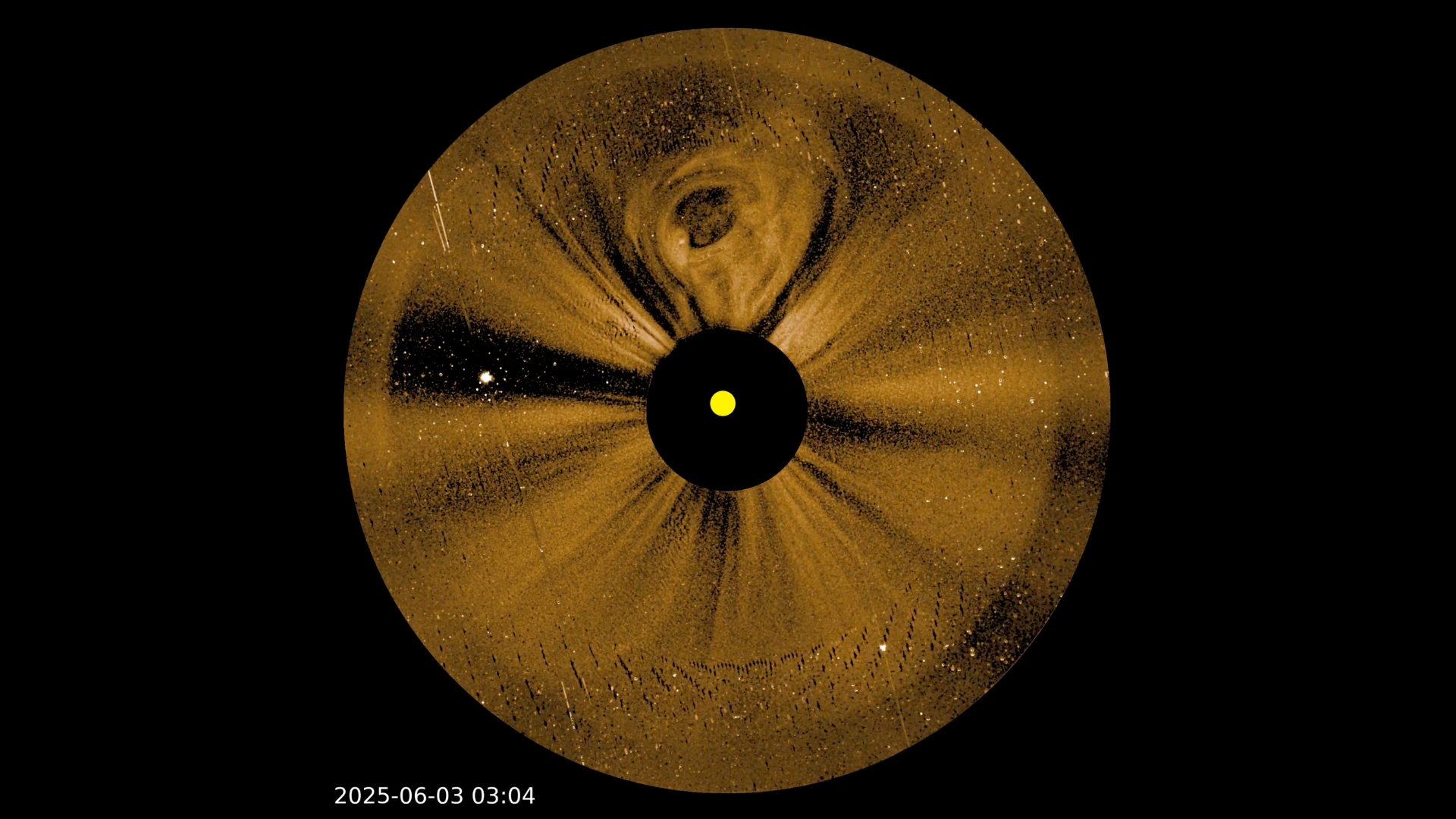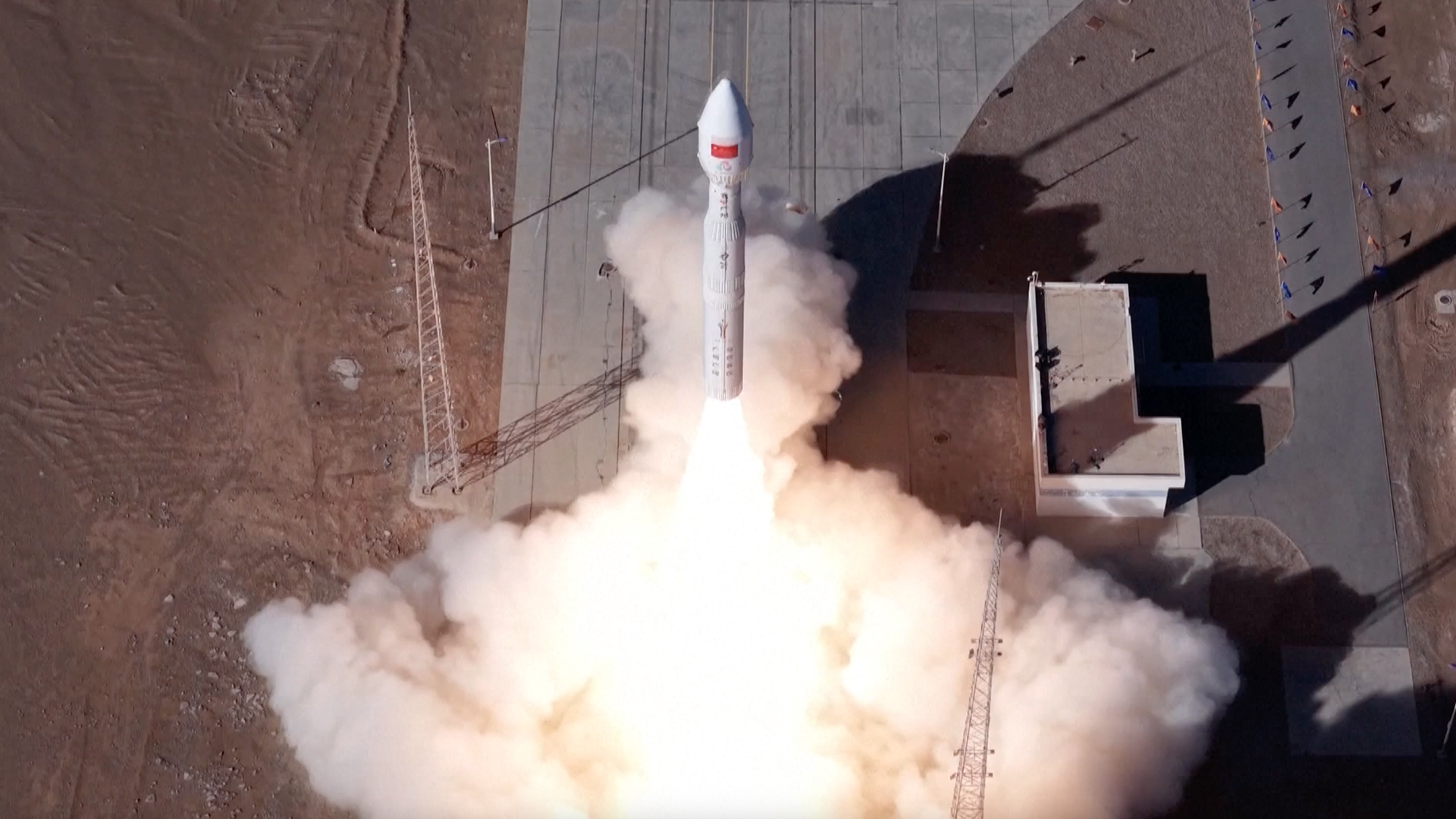NASA's PUNCH delivers knockout views of colossal solar storms erupting from sun (video)
"These first images are astonishing, but the best is still yet to come."

NASA's PUNCH mission has unveiled its first images of colossal solar eruptions known as coronal mass ejections (CMEs) — delivering an unprecedented, wide-field view of how these solar storms travel through the inner solar system.
CMEs are vast plumes of plasma and magnetic field ejected from the sun. When directed toward Earth, they can trigger geomagnetic storms that disrupt satellites, GPS and pose risks to astronauts. These geomagnetic storms can also supercharge auroras, leading to incredible light shows beyond their usual latitude range. Understanding the mechanisms behind these key drivers in space weather will help protect satellites, astronauts, and infrastructure, while also giving us a better sense of when to expect dramatic aurora displays.
The new CME images, captured from late May to early June 2025 by three of PUNCH's four spacecraft, were revealed Tuesday during the 246th American Astronomical Society meeting in Anchorage, Alaska. The PUNCH spacecraft features four cameras that together form a "virtual instrument" that allows scientists to track CMEs across the inner solar system in greater detail than ever before.
"These first images are astonishing, but the best is still yet to come," Craig DeForest, PUNCH principal investigator from Southwest Research Institute's Solar System Science and Exploration Division in Boulder, Colorado, said in a statement. "Once the spacecraft are in their final formation, we'll be able to routinely track space weather in 3D across the entire inner solar system."
In a stitched video sequence, massive CMEs can be seen billowing outward in all directions, some heading directly toward the camera. Among the celestial backdrop are the moon, Venus, Jupiter and the constellation Orion.
The moon is visible as a bright object toward the left of the frame at the start of the video. The Orion constellation is at the bottom left, while Jupiter is just left of the center and Venus is on the far right. The sun itself is marked by a yellow dot at the center, while a dashed white circle represents the field of view of the older LASCO C3 coronagraph on NASA-ESA's SOHO spacecraft.
The fourth spacecraft's Narrow Field Imager (NFI), a coronagraph designed to block the sun's light captured a CME in exquisite detail on June 3. The bulb-shaped eruption emerges above the blacked-out sun, showcasing the instrument's ability to observe the sun's outer atmosphere in great detail.
Breaking space news, the latest updates on rocket launches, skywatching events and more!
PUNCH launched atop a SpaceX Falcon 9 rocket at 11:10 p.m. EST March 12, 2025 (0310 March 12 GMT), alongside the SPHEREx space telescope. The mission consists of four small satellites working together in sun-synchronous orbit, whereby the satellite maintains the same 'fixed' position relative to the sun.
Over its planned two-year mission, PUNCH will deliver continuous, global 3D observations of the sun’s outer atmosphere and the inner solar system. By tracking how solar material escapes to form the solar wind, scientists hope to get a clearer picture of how space weather, including powerful events like CMEs and solar flares, forms and evolves. Ultimately, this could improve forecasts of space weather impacts on satellites, astronauts, and tech systems here on Earth.

Daisy Dobrijevic joined Space.com in February 2022 having previously worked for our sister publication All About Space magazine as a staff writer. Before joining us, Daisy completed an editorial internship with the BBC Sky at Night Magazine and worked at the National Space Centre in Leicester, U.K., where she enjoyed communicating space science to the public. In 2021, Daisy completed a PhD in plant physiology and also holds a Master's in Environmental Science, she is currently based in Nottingham, U.K. Daisy is passionate about all things space, with a penchant for solar activity and space weather. She has a strong interest in astrotourism and loves nothing more than a good northern lights chase!
You must confirm your public display name before commenting
Please logout and then login again, you will then be prompted to enter your display name.



